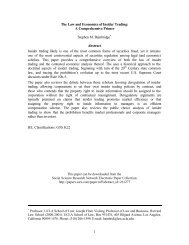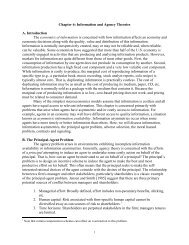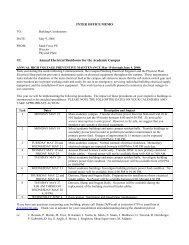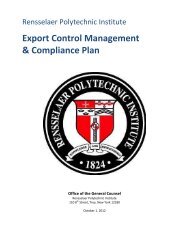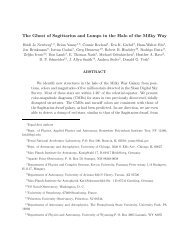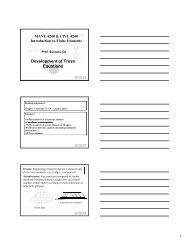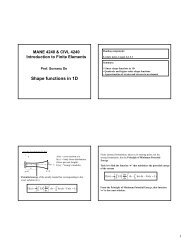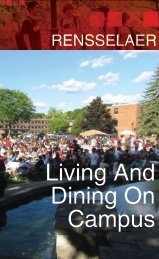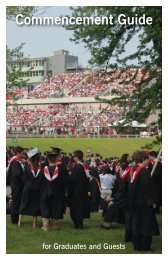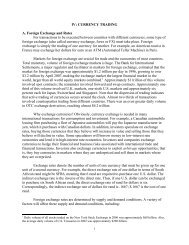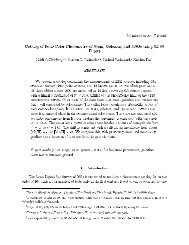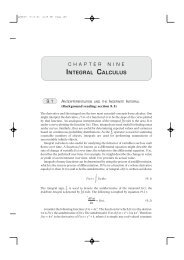Quiet Crisis - Building Engineering and Science Talent
Quiet Crisis - Building Engineering and Science Talent
Quiet Crisis - Building Engineering and Science Talent
Create successful ePaper yourself
Turn your PDF publications into a flip-book with our unique Google optimized e-Paper software.
Overall Population<br />
(Working & Nonworking)<br />
U.S. Workforce<br />
White/Asian 74.3%<br />
White/Asian 79.1%<br />
<strong>Science</strong> & <strong>Engineering</strong> Workforce<br />
White/Asian 93.2%<br />
Other 0.9%<br />
Other 0.1%<br />
Other 0.3%<br />
Hispanic 12.5%<br />
African<br />
American 12.3%<br />
Source: 2000 Census<br />
Hispanic 10.1%<br />
African<br />
American 10.7%<br />
Source: Women, Minorities, Persons with Disabilities, National <strong>Science</strong> Foundation , 2000<br />
Hispanic 3.1%<br />
African<br />
American 3.4%<br />
success <strong>and</strong> failure, <strong>and</strong> insights into scaling up would be of<br />
great value to employers, educators, parents, <strong>and</strong> students.<br />
BEST has organized blue ribbon panels of nationally recognized<br />
experts in pre-K through 12, higher education, <strong>and</strong> workforce<br />
development to make these judgments.<br />
Community Engagement BEST will take its knowledge <strong>and</strong><br />
insights to communities. The quiet crisis must be addressed by<br />
leadership from the bottom up, as well as the top down. Civic<br />
leaders need practical advice on the ground. For example,<br />
BEST might provide a comprehensive checklist that enables a<br />
community to assess its capacity to develop a more diverse<br />
technical workforce. Based on its comm<strong>and</strong> of outst<strong>and</strong>ing<br />
programs <strong>and</strong> their costs, BEST could go beyond this to help a<br />
community set <strong>and</strong> implement priorities.<br />
A National Strategy BEST will link the widely shared underst<strong>and</strong>ing<br />
that U.S. interests are at risk with the specific<br />
requirement of building a stronger, more diverse pool of U.S.<br />
scientific <strong>and</strong> technical talent. The link has to be made at the<br />
national level by developing an agenda that galvanizes leaders<br />
from government, industry, education, professional societies,<br />
<strong>and</strong> the foundation community. There is no substitute for<br />
national leadership to generate the will <strong>and</strong> the resources<br />
needed to make serious headway over the next decade. As is<br />
the case with the war on terrorism, there is no quick fix for the<br />
challenge of under-representation. Equally, there is a parallel<br />
need for a cohesive national strategy. A national strategy<br />
requires a compelling vision, clear objectives, <strong>and</strong> actionable<br />
priorities.<br />
The vision that I find compelling is one of affirmative opportunity<br />
to develop the scientific <strong>and</strong> technical talents of every child<br />
in America.<br />
The objective that makes sense is to create a scientific <strong>and</strong><br />
technical workforce that reflects the changing face of America.<br />
Priorities for Action<br />
Many of the priorities <strong>and</strong> action steps needed to develop a<br />
national strategy will emerge from an assessment by BEST of<br />
what is <strong>and</strong> is not working. As the blue ribbon panels convened<br />
by BEST chart the way forward in pre-K through 12, higher<br />
education, <strong>and</strong> the workplace, they will frame recommendations<br />
for all of the sectors that have leadership roles to play at<br />
the national level. The following framework provides a starting<br />
point.<br />
Source: Bureau of Labor Statistics, 2000 www.bls.gov<br />
6



